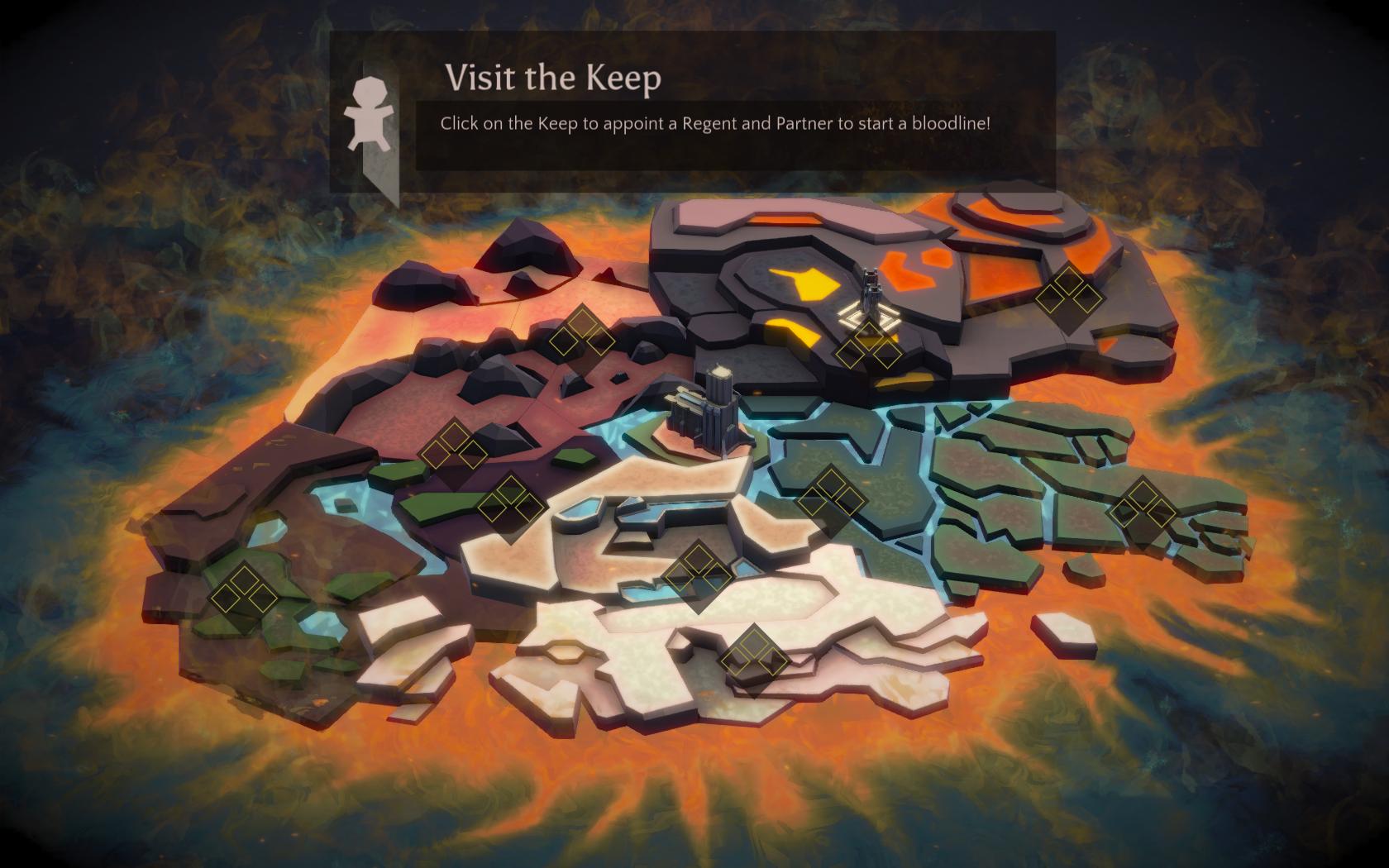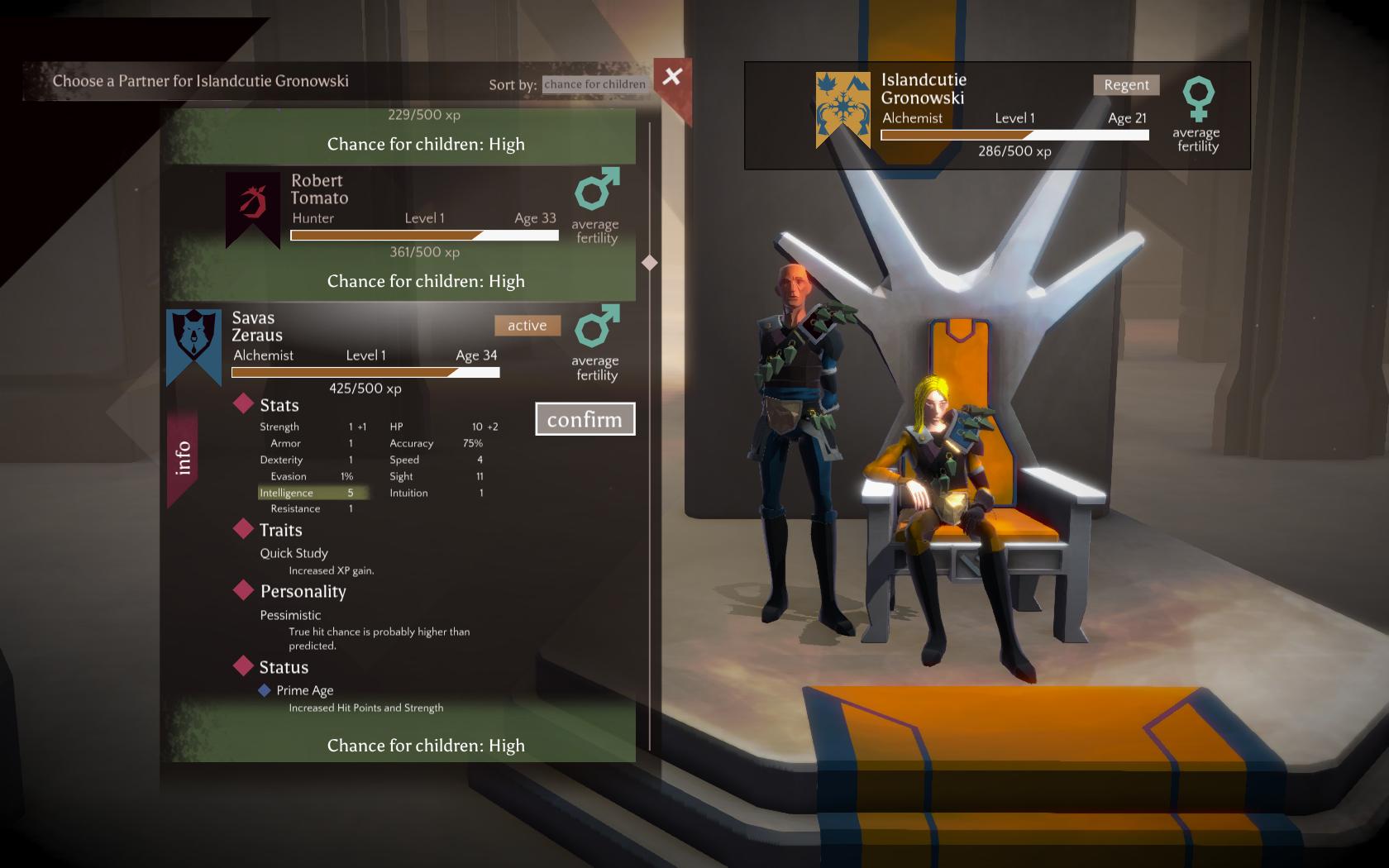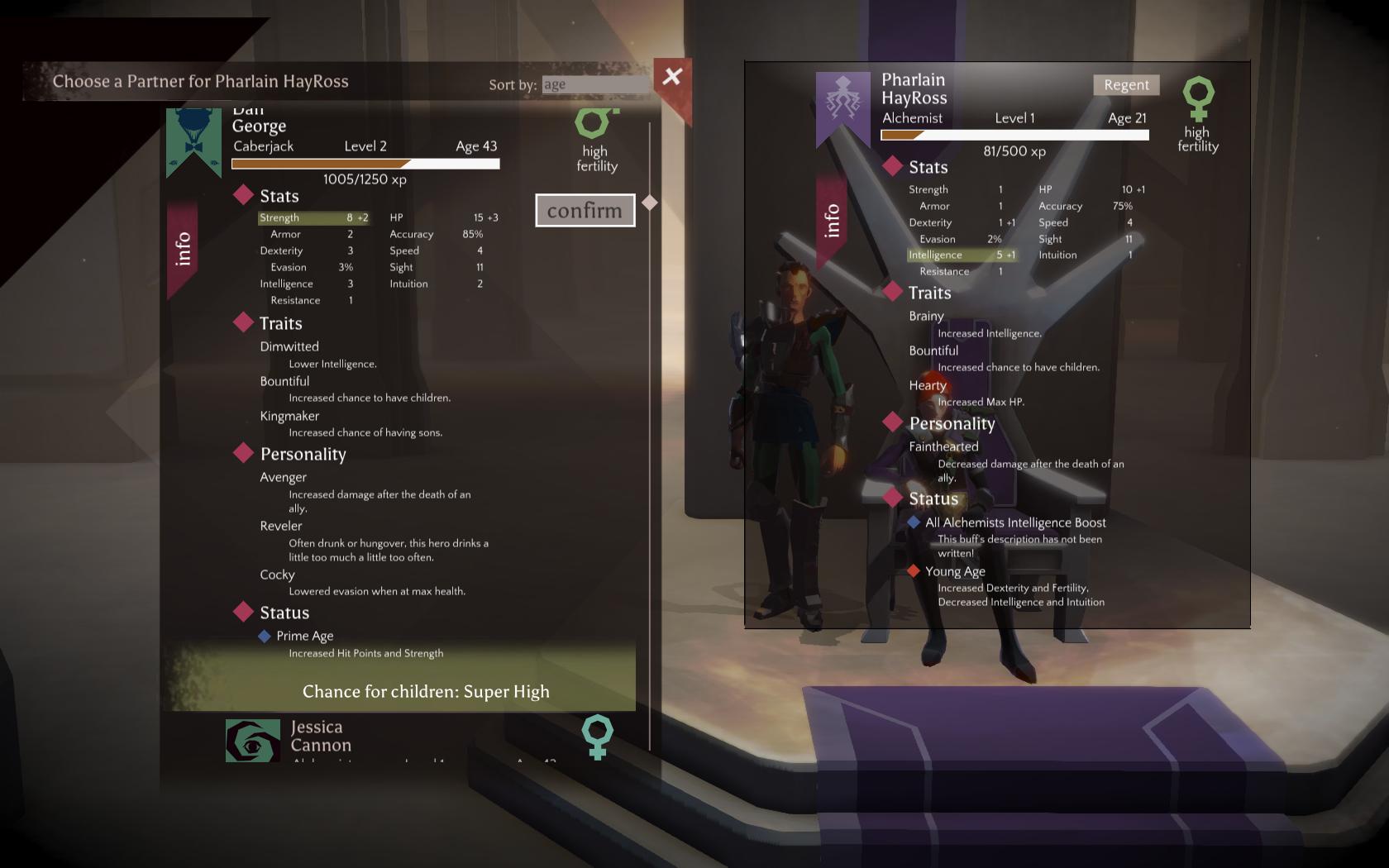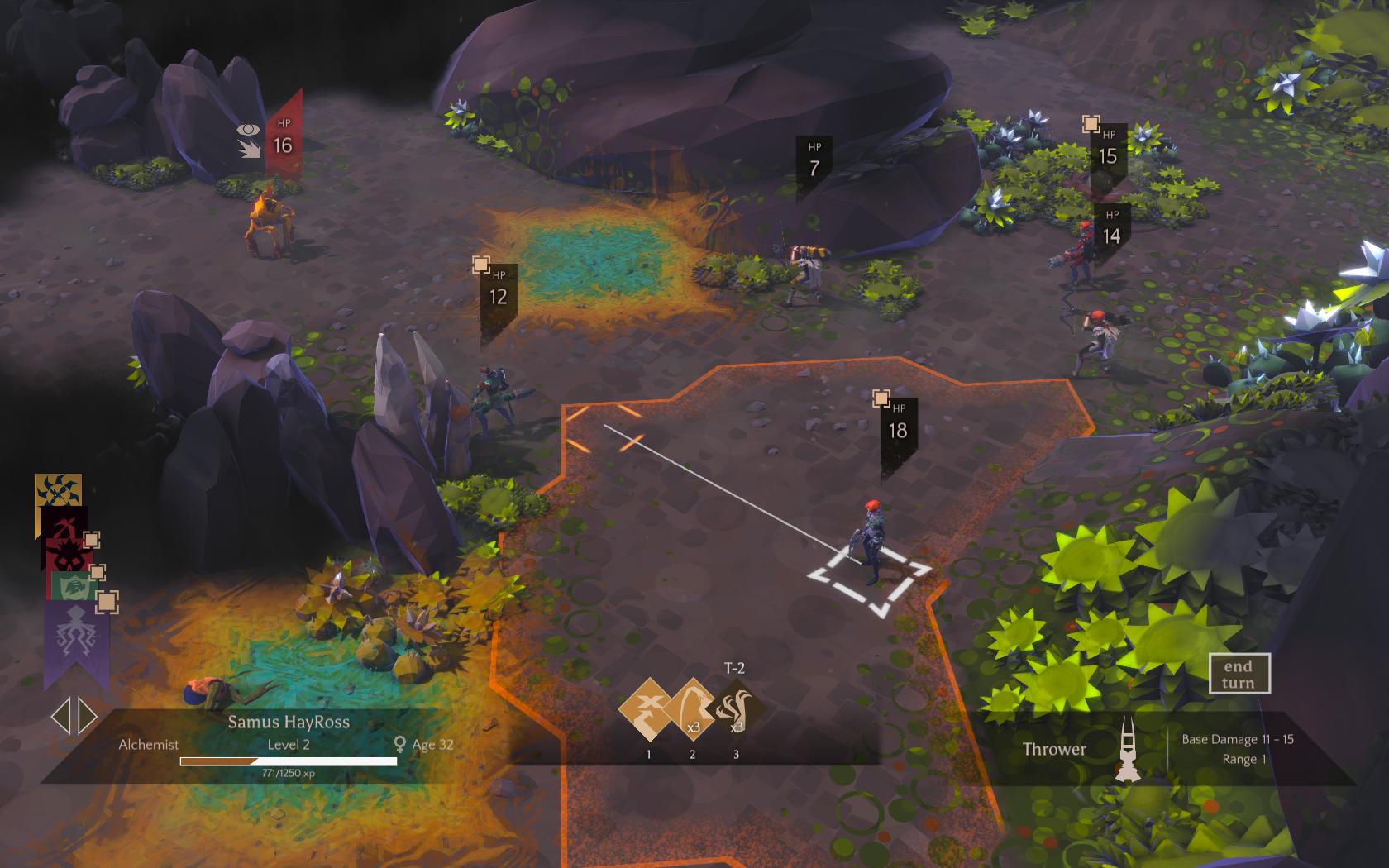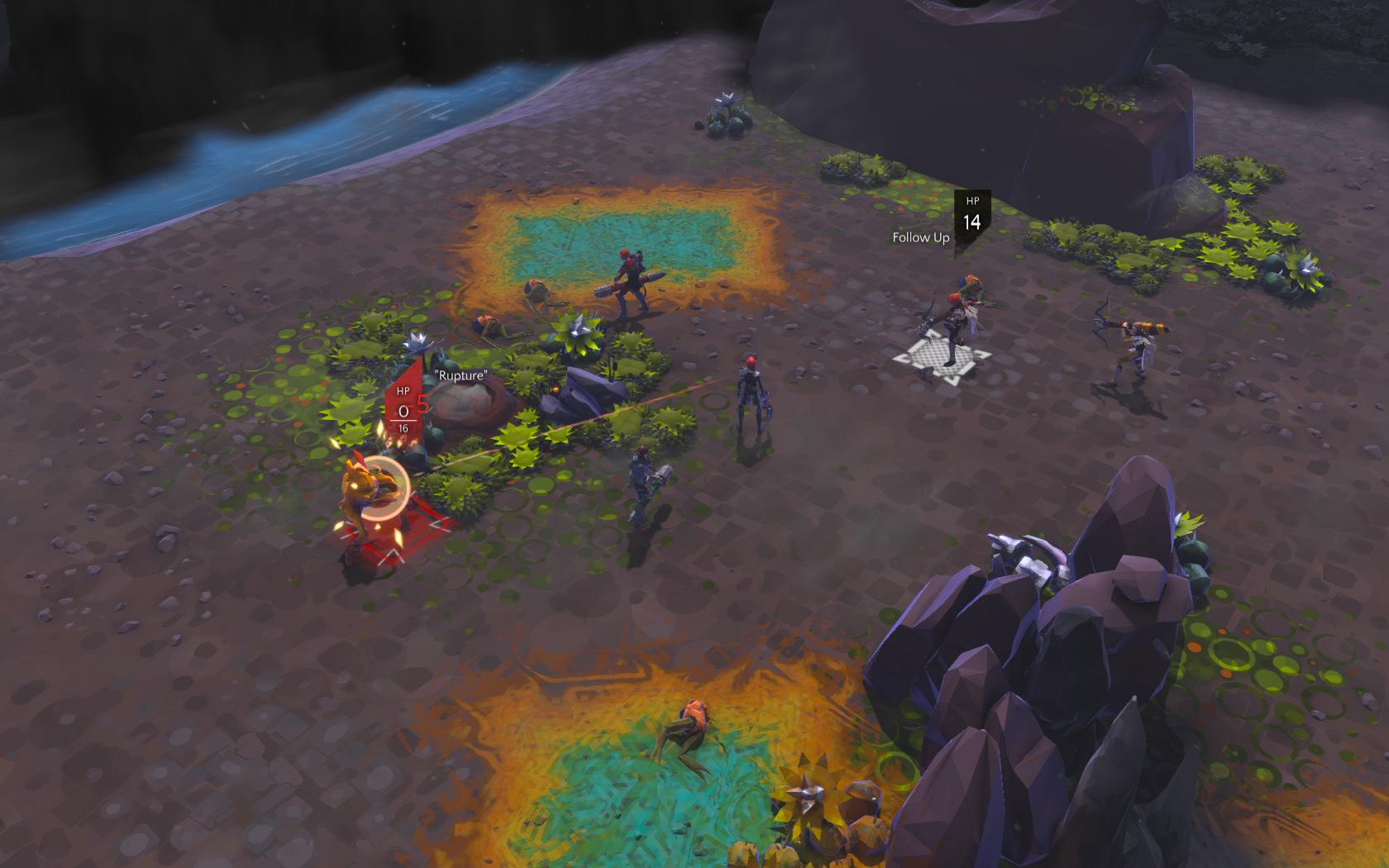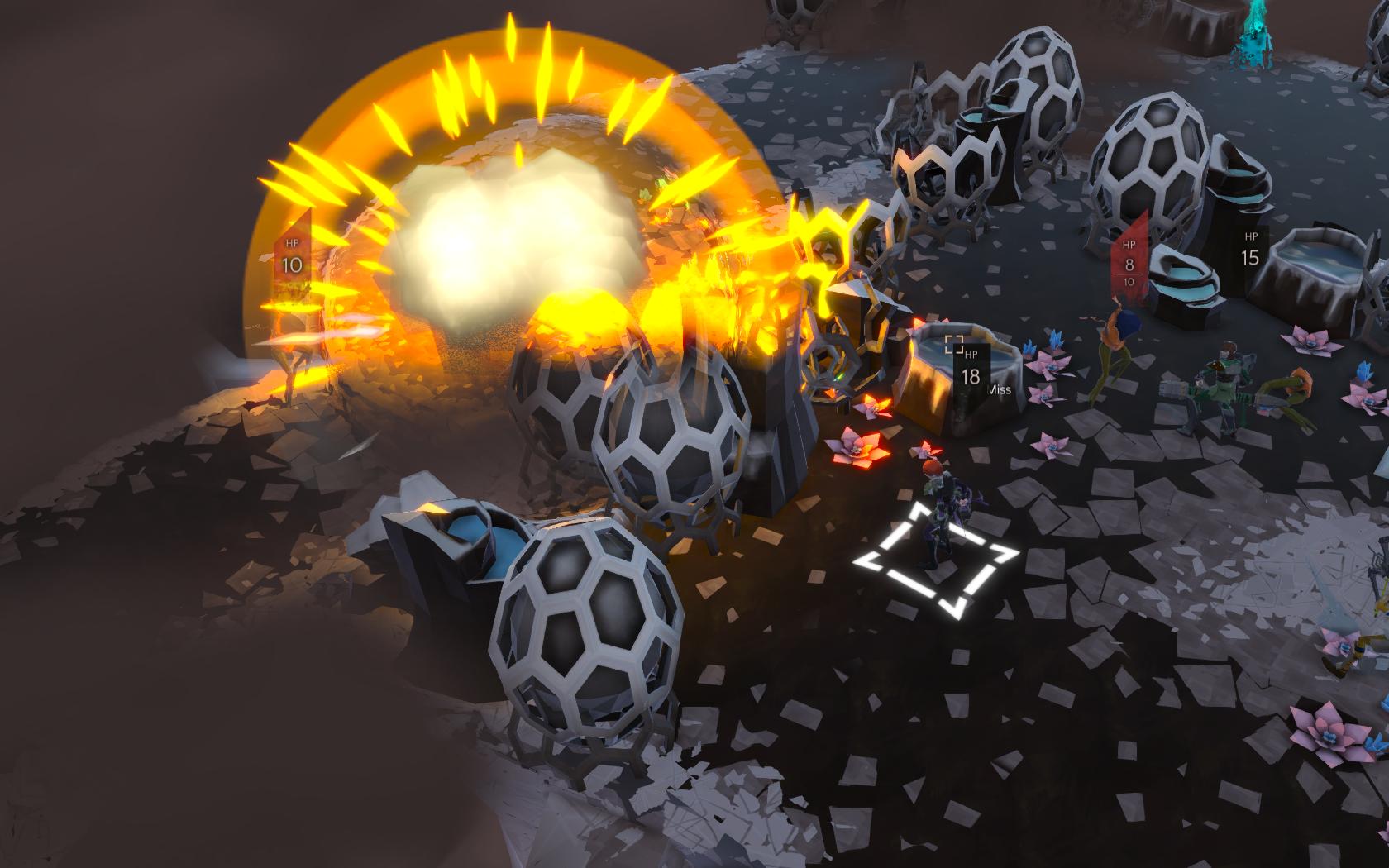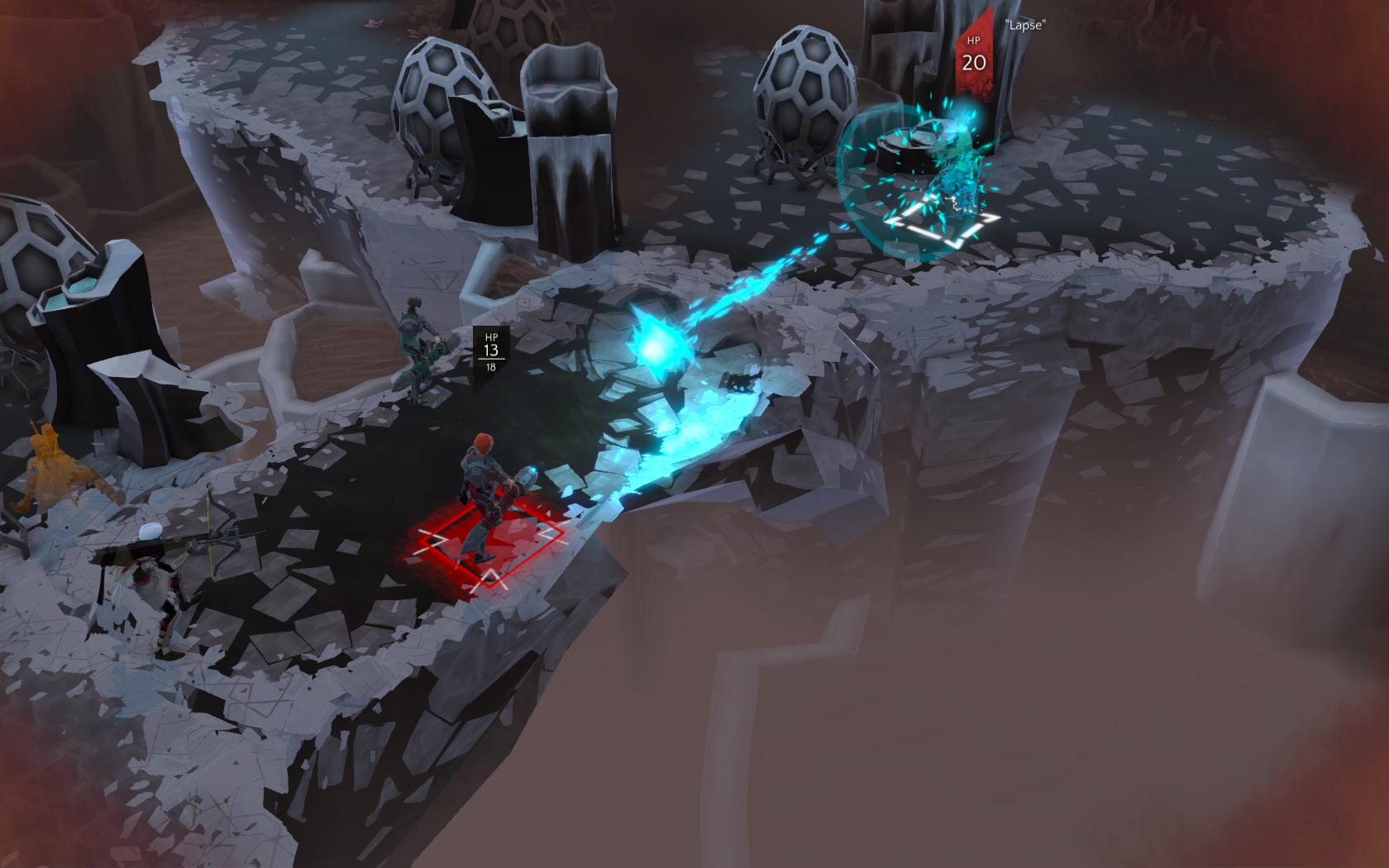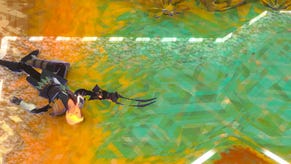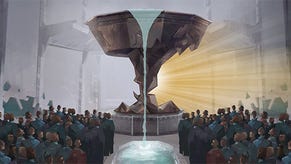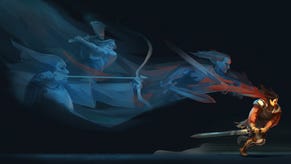Premature Evaluation: Massive Chalice
A Mug's Game?
Each Monday, Marsh Davies splashes around in the shallow end of the Early Access gene pool and brings back whatever novel splices and/or horrific abominations he can find. This week he crunches chromosomes in fantasy lineage sim and turn-based battler Massive Chalice.
Score one for diversity in games: the realm has just been saved by a nearsighted, asthmatic, drunk lady. Marginalised wheezing pissheads rejoice! (Though do keep an inhaler and bucket close to hand.) Massive Chalice combines XCOM’s turn-based permadeath squad combat with Crusader Kings’ management of bloodlines across multiple generations, inducting heroes into a ruthless breeding program intended to foster a roster of noble characters with superior physiques. But, well, you have to work with what you’ve got and what I’ve got is a malformed, shuffling host of genetic wreckage. For the first time in games, I am among my people.
While I’m delighted by the idea of fielding a fighting force of stumbling, arthritic dunces, I’m less keen on the fact that my first shot at Massive Chalice’s campaign fails to provide me with a single archer - or Hunter, as they’re called here. Your heroes are randomly generated, you see, and those devil dice have rolled an entire outfit made up of melee units called Caberjacks, who slam things with a giant timber trunk, and grenadiers, dressed up here as Alchemists. There are only these three unit types in the game, and I don’t want to miss out on one during my first playthrough so - call me a coward - I cancel back to the main menu and start again. No Hunters. I start again. All hunters. And again...
Massive Chalice leans heavily on its random number generator throughout, and not always to good effect: my ensuing experience with the campaign suggests the first few hours of combat would be pretty monotonous with a homogeneous force. Later on, individuals distinguish themselves with unlockable abilities and weapons, but initially your tactical toolset is a little bare, even with all three classes in play.
Eventually I restart enough times to field a crew of neurotic lightweights who at least have a couple of Hunters among them. Each hero comes from a noble house, lists individualised stats and various (mostly unflattering) qualities. At the outset, you can toggle whether these heroes have serious or silly names, but given that the game is narrated by a wisecracking sentient chalice, it doesn’t feel like you should be especially precious about the fiction. Why is there a wisecracking sentient chalice? Other than to orient the player in his or her role as an immortal commander, it’s not clear. At any rate, the realm is under assault by the monstrous regiment of The Cadence, and only this magical chalice will save it. But it’s going to take hundreds of years before the chalice amasses the strength to force The Cadence back, during which time muggins here will have to manage successive generations of a heroic defence force.
To whit, with the tutorial done, I’m asked to select my first breeding pair of heroes, one of whom rules a keep as regent, and the other stands as her or his partner. I admit I have a growing sense of unease about this. Interesting from a coldly mechanical perspective though it is, there’s something unsettling about the game’s blithely eugenicist principles.
Your efforts to mould a master race are, however, heavily dictated by circumstance: the selection of candidates for this position is pretty thin. I only have a couple of heroes who aren’t revolting degenerates, or simply infertile, and I’m torn between whether I level them up in the field, where they will be more effective than their peers, or preserve their attributes by making them regent. The best candidate is the brainy and hearty Pharlain HayRoss - but she’s only 15. The nearest fertile male is twice her age. That match might seem more acceptable in a game built upon the historical truth of medieval courtships, like Crusader Kings, and I know it’s just a number and not a real person, but, somehow, the prospect of forcing a child to have sex with a much older man feels a little out of keeping in a game with a giant talking chalice.
There’s another thing, too. It’s possible to choose same sex couples - though they aren’t able to breed. I’m sure it sounded like a good idea on paper, and I would normally applaud the representation of non-hetero families. But these pairings are not consensual and the heroes themselves state no sexual preference. So, it’s sort of doubly odd to force people into an arranged marriage for the sole purpose of breeding - and yet ensure that this is impossible. You can adopt a child later in the game, but it comes at a disproportionately large cost to breeding and it won’t inherit the genetic characteristics of its adoptive parents. I don’t know what the game is trying to say here, or even what it’s trying to achieve mechanically, but it feels muddled.
In the end, I decide not to cut Pharlain’s adolescence short, and find an older, but less genetically robust candidate. And so it is that Islandcutie Gronowski becomes regent of Keep Canadiana, ruling beneath the motto “The End Is Near”. The next few years are uneventful - a timeline tickers across the map screen to mark their passing. Now I feel a little better about forcing Pharlain into marriage - she’s 21 - and pack her off into a keep of her own with a middle-aged, dimwitted gentleman who is, alas, one of the only fertile men available.
With my best-ish genes tied up in the act of baby-making, I now have few heroes worthy of the field. I opt to recruit some more heroes - a process that, again, takes years, but furnishes me with a couple of promising talents. Chief among them is the caber-wielding Morvan Moran. She’s a quick study, wily, and likely to produce male offspring. Things still aren’t looking good for my hunters, though, despite my many restarts, and little improves with the influx of new recruits. The best is Alyx Hammerstrom: myopic, puny, prone to flinching in melee combat and so asthmatic that she can barely move after sprinting. She’s also a massive piss-artist.
But many a real hero has been fond of the bottle, right? And surely minor physical frailties can be overcome with nurture and training? I’ll soon find out, it seems, as war has finally reached my shores. It comes on two fronts, but I can only choose to defend one, a simple bit of maths that ratchets up the pressure as the years progress. If you fail to defend one region of the map three times, it succumbs to the Cadence’s corruption, taking with it any Keeps you have built there and all who live within them. For now, however, the invaded lands are empty, and the choice between them is a coin-toss. I select three veterans of the tutorial battle: Cherry Tomato, a near-decrepit Hunter; Samus HayRoss, an Alchemist with dodgy aim; and Decimus Deedoo, a dimwitted Caberjack. I fill out the roster with two fresh recruits: the girl wonder Morvan, wielding a caber, and booze-hound Alyx, who I hope won’t be too hungover to aim her bow.
The battlefield is a rocky arena, littered with boulders and geysers that occasionally fart out plumes of sallow steam. I quickly regret having two Caberjacks - it seems this level is designed to introduce exploding enemies, called Ruptures, who detonate upon death to leave a corrosive AOE sludge. A melee vanguard is therefore ill-advised, but it may be too late: the enemy can probably close the distance to Morvan in the next turn. I slink Samus forward and, in what turns out to be an exceeding rarity, she lands one of her explosive flasks on top of the enemy, taking off all but a sliver of health.
Alchemists are otherwise something of a liability, it seems. Their explosives can easily catch friendlies in their blast, and their to-hit percentages plummet at anything other than close range - which is not the ideal range to use explosives, generally speaking. They only have five flasks to throw anyway, which you rapidly exhaust. Perhaps they unlock wider functions later on, but, in the early game, they seem pretty redundant next to the Hunters.
Not that you’d know it from Cherry’s first effort in this battle, as his arrow goes wide. It’s all down to Alyx. Wiping a crust of vomit from her lips (I imagine) she blinks down the scope. And bullseye! The beast explodes into an iridescent slime that almost catches Alyx herself in its spooge.
A few more detonated Ruptures later and the battlefield is slick with corrosive ooze, forcing me to double back and circle round. But I’m beginning to get a feel for how the different classes’ abilities might interlock. Hunters have the ability to cloak into cover, making them ideal scouts and Caberjacks, who can slurp up aggro and damage, make obvious tanks. They also have the ability to stun and knockback enemies, and this is a handy way to delay Ruptures’ suicidal tendencies, while giving your Hunters a chance to detonate them at a safe range.
Or in my case, it’s Hunter, singular, as Alyx’s respiratory condition means that she can’t keep up with the pace set by her fellow heroes and spends most of the engagement shuffling out of the starting area. But I’m proud to say she makes it to the final battle, staggering in at the 11th hour to land the very last shot. Who needs ubermensh, anyway? She’s earned a pint or several.
I don’t know that the tactical interplay between classes is as rich and deep as it might be, and the Alchemist’s fumbling for purpose suggests there’s a lot to balance still. I’d certainly wish for more options, more quickly - more ways to distinguish units from each other - as even across the course of a single battle, I found my attention beginning to wander.
As for the hero-breeding meta game: there’s an interesting tension between preserving abilities for future generations and deploying them in the field. You can also retire heroes to the Sagewright’s Guild, buffing your subsequent research efforts - a huge boon, but at the cost of yet more deployable units.
Cherry Tomato doesn’t get the chance to retire, sadly, and keels over at the age of 61. Pharlain becomes an old lady. Her babies grow into strapping young things and then into rugged veterans and then into whitebearded sages. The advance of years makes you think more coldly about the long-game, but there aren’t that many levers you can pull to really change its course, and you’re only ever allowed to pull one at a time. You are the puppet of exigency, at the mercy of the random number generator.
Perhaps it’s more aesthetic than mechanic, that sense of ages passing, sweeping beloved heroes into the dusty annals. When Alyx’s beleaguered liver finally packs in, she becomes nothing but a red skull icon, flying across the timeline at the top of the screen and into the past, further and further. I dearly wish the game offered some way to salute her - a statue, or one of those blue plaques. She wasn’t the toughest or the fastest. She wasn’t a sure shot or a braveheart. But she still stepped up and did her bit: truer heroism games have rarely seen.
And, by god, could she drink. You have to raise a glass to that.
Massive Chalice is available from Steam and costs £23, which is almost worth it, given the current state of the game and an assumption of ongoing improvement between now and its spring 2015 release. I played the version available on 21/11/2014.



